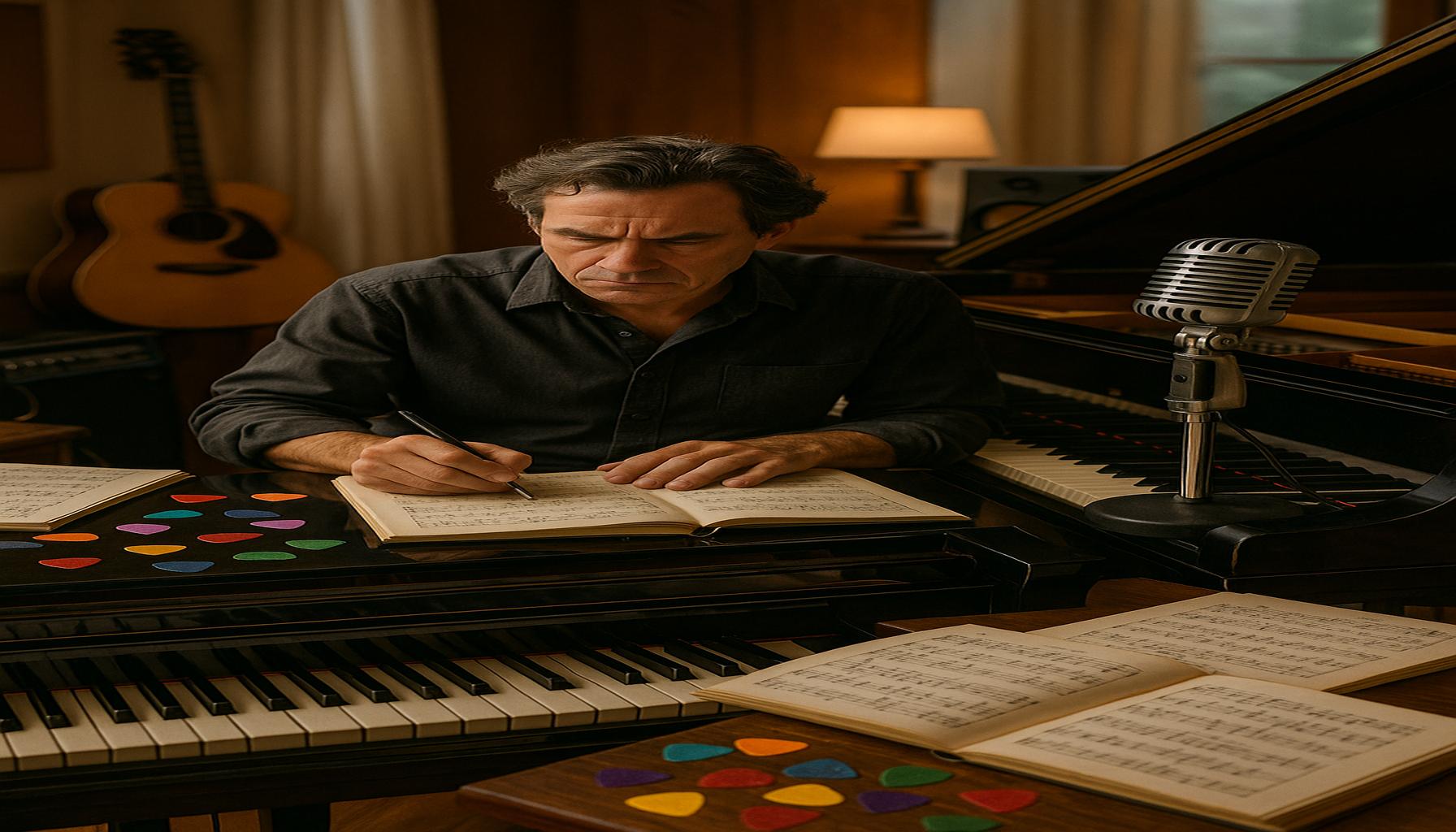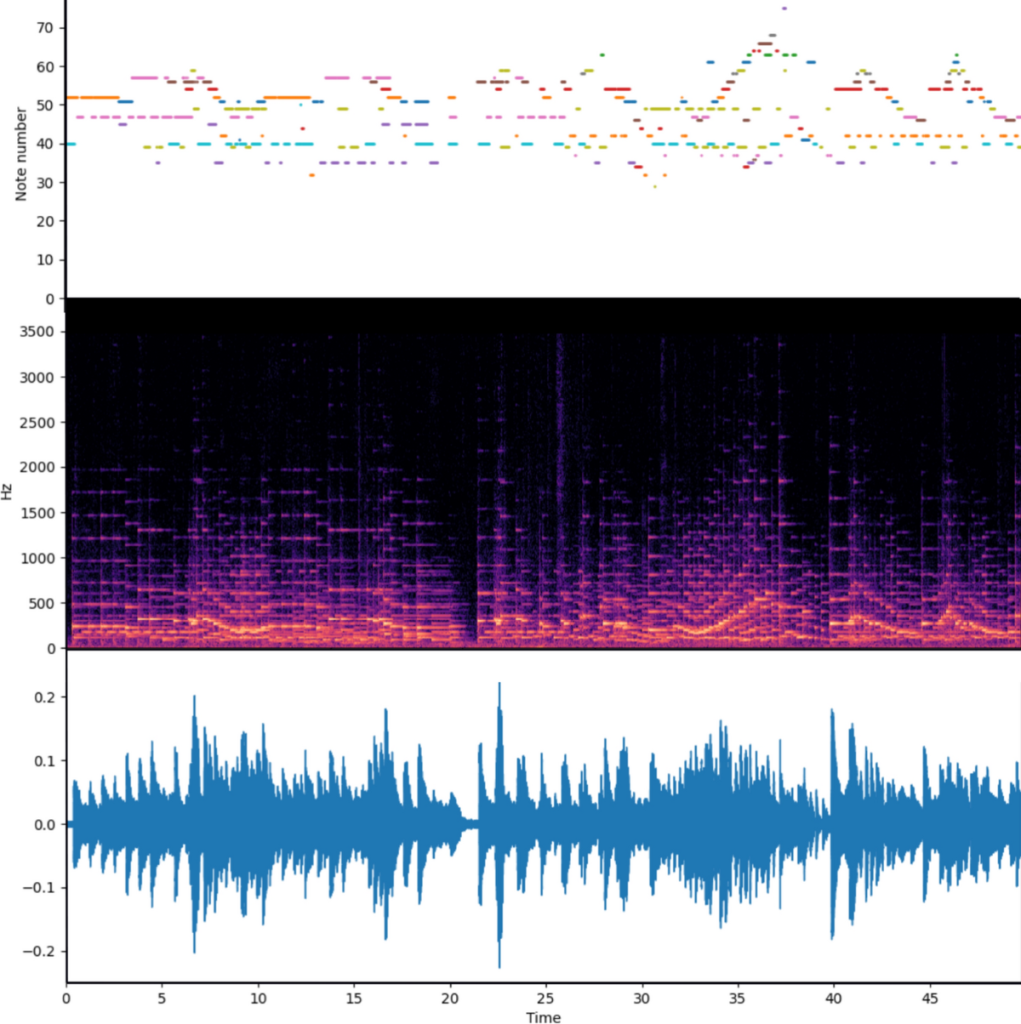Master Emotional Music Composition Transform Moods into Melodies

Music has the remarkable ability to evoke and transform emotions, allowing both creators and listeners to connect deeply with their feelings. For those who pursue music as a creative hobby, mastering the art of emotional composition can be an incredibly fulfilling journey. Understanding the techniques that help translate emotions into melodies is essential for anyone looking to express themselves through song.
This exploration not only enhances one’s musical skills but also taps into the therapeutic aspects of music creation, fostering a deeper appreciation of emotional nuances. By learning how to effectively manipulate elements such as harmony, rhythm, and lyrics, aspiring songwriters can capture the listener’s heart while also reflecting their own experiences.
In this article, we will delve into the Top 5 techniques that can help individuals channel their unique feelings into captivating compositions. From melody construction to lyric writing, these strategies will equip you with the tools necessary to craft songs that resonate and inspire.
Exploring Musical Composition: Techniques to Transform Emotions into Songs
Music has an unrivaled power to evoke emotions and communicate feelings that often transcend the limitations of language. It is an art form that resonates deeply with our inner experiences, allowing us to explore them in profound and sometimes unexpected ways. Songwriting, as a crucial facet of this art, serves as a bridge between an individual’s intimate emotional landscape and the broader world of music. Whether you’re a budding songwriter or an experienced composer, enhancing your ability to translate raw emotions into captivating melodies is a skill worth developing. Here, we explore the top five techniques to achieve this transformation, allowing your songs to reflect genuine human experiences.
5. The Power of Lyrics
Lyrics form the narrative backbone of any song. They tell stories, convey messages, and most importantly, they evoke emotions. Crafting lyrics that resonate with listeners is crucial for creating music that leaves a lasting impact. Effective lyrics often incorporate literary devices such as metaphors, similes, and alliteration to add depth and texture. A metaphor might compare love to a journey, whilst a simile could liken hope to a flickering candle in the dark. These elements can make your lyrics not only more engaging but also more relatable.

Consider drawing from personal experiences or universal themes such as love, loss, hope, and resilience. These themes provide fertile ground for creating music that is both authentic and universally relatable. When lyrics reflect genuine emotions, they allow listeners to immerse themselves in a familiar emotional landscape, fostering a deep connection with the music. Additionally, the interplay between lyrics and melody is vital; when paired harmoniously, they elevate the emotional and evocative power of your compositions.
4. Melodic Techniques
A melody is often what listeners remember most about a song. It serves as the emotional core around which lyrics and harmony revolve. When crafting a melody, consider the emotional arc you wish to convey. A soaring melody might signify triumph or exhilaration, while a descending line could suggest sadness or contemplation.
Experimenting with melodic structures can help define the emotional tone of a piece. Here are several approaches:
- Repetition: Repeating a melodic phrase can emphasize particular emotions, making them more memorable.
- Contrast: Introducing tension through contrasting melodic phrases can create an emotional journey that resolves satisfyingly.
- Motifs: Using short, recognizable motifs helps ground the melody while enhancing memorability and emotional resonance.
Through these techniques, you can infuse your melodies with emotions that resonate with listeners, enhancing the narrative told by your lyrics.
3. Harmonization and Chord Progressions
The harmony that underpins a melody significantly influences a song’s emotional impact. Different chord progressions evoke diverse feelings and can transform the listener’s perception of the lyrics. For example, the ubiquitous C-G-Am-F progression often feels optimistic and uplifting, while a progression in a minor key might evoke introspection or melancholy. Understanding how chords elicit emotions is essential for creating emotionally powerful songs.
Consider these common emotional impacts of various chord qualities:
- Major chords: Typically associated with positivity, happiness, and brightness.
- Minor chords: Commonly convey sadness, introspection, or a somber tone.
- Diminished chords: Usually create tension, suspense, or unease, allowing for dramatic storytelling.
Juxtaposing different chord types can create unexpected and complex emotional landscapes, adding depth to your compositions. By articulating emotion through harmony, you layer additional meaning onto your lyrics and melody, strengthening the overall impact of your song.
2. Dynamics and Instrumentation
The dynamics of a piece—the way it transitions between loudness and softness—along with the choice of instrumentation, plays a pivotal role in shaping the listener’s emotional response. Utilizing dynamics effectively enables you to guide your audience through various emotional peaks and valleys, enhancing the storytelling aspect of your music.
Consider these techniques for incorporating dynamics and instrumentation:
- Build-ups: Gradually increasing volume can heighten excitement and anticipation.
- Soft Moments: Introducing quieter sections can enhance emotional depth and provide contrast.
- Instrument Choice: Certain instruments naturally evoke specific emotions—strings may suggest warmth and nostalgia, while brass might signal empowerment or grandeur.
Thoughtful manipulation of dynamics and instrumentation not only enriches the emotional texture of your song but also invites listeners to engage deeply with your music, experiencing the full breadth of its emotional narrative.
1. Emotional Authenticity
At the heart of impactful songwriting is emotional authenticity. For songs to resonate truly and deeply with an audience, they must reflect genuine feelings and experiences. Being honest and vulnerable enables your music to resonate with authenticity, which listeners can inherently sense. This authenticity can forge powerful connections between the songwriter and their audience.
To achieve this, engage in self-reflection and identify experiences, dreams, and emotions that are significant to you. This introspective process can uncover the raw material necessary for crafting music that not only resonates with your own inner truth but also connects with listeners on a personal level.
Authenticity fosters emotional ties that bring listeners back time and again. By sharing your real-life experiences and heartfelt emotions, you invite your audience into your world, creating meaningful connections that transcend the boundaries of sound and words.
In conclusion, by harnessing these techniques—lyrics, melody, harmony, dynamics, instrumentation, and authenticity—you can transform raw emotion into songs that not only captivate but also resonate with listeners, creating timeless music that speaks to the heart of human experience.
| Technique | Description | Benefits | Suitability |
|---|---|---|---|
| Lyric Writing | Crafting lyrics that resonate emotionally with listeners by using vivid imagery and relatable themes. | Enhances emotional connection and allows storytelling to flourish, making songs memorable and impactful. | Best for songwriters looking to convey deep emotions through words. |
| Melodic Structure | Designing a melody that reflects the emotional tone of the lyrics, using various scales and intervals. | Creates an auditory representation of emotions, allowing listeners to feel the essence of the song. | Ideal for composers aiming to create an evocative and memorable sound. |
| Dynamic Contrast | Utilizing variations in volume, intensity, and tempo to heighten emotional impact. | Captivates attention and enhances the emotional journey of the song. | Perfect for musicians who want to engage their audience through dynamic shifts. |
| Harmonic Choices | Selecting chords and harmonies that evoke specific feelings, either uplifting or melancholic. | Sets the emotional tone of the song and enhances lyrical messages. | Suited for composers striving for an emotional atmosphere that aligns with the song’s theme. |
The art of songwriting is deeply intertwined with the manipulation of emotions. Lyric writing remains fundamental, as the choice of words can either build a bridge to the listener’s heart or fall flat in conveying a message. By employing vivid imagery and universal themes, songwriters can paint pictures that evoke nostalgia, happiness, or melancholy.Melodic structure plays a crucial role as well; the melody must echo the emotional cadence of the lyrics. Choosing the right scale and intervals not only aids in harmonizing the song but also lets listeners experience the subtext of emotions being conveyed. It’s this responsiveness to musicality that can elevate a song.Moreover, dynamic contrast acts as a technique to maintain listeners’ interest. Varying volume and tempo throughout a piece creates peaks of excitement and valleys where introspection can occur, amplifying the overall emotional experience.Finally, harmonic choices lay the groundwork for the song’s emotional landscape. Different chords can evoke vastly different feelings; a minor chord might evoke sadness, while a major chord generally brings about joy. Understanding this gives musicians the power to tailor their emotional delivery to their intended message.
Frequently Asked Questions about Musical Composition
What are some techniques to translate emotions into music?
Composers have a vast array of techniques to convey emotions through music. One effective method is using the choice of key; different keys can evoke varied emotional responses. For instance, D minor is often associated with melancholia, whereas C major might evoke a sense of innocence and simplicity. Another technique involves dynamics and tempo. A fast tempo with forte dynamics might convey excitement or anxiety, while a slow tempo with piano dynamics can communicate tranquility or sadness. Experienced composers often use melodic contour and harmony to enhance these emotional expressions, creating an intricate tapestry of feelings.
How can a songwriter ensure their lyrics connect emotionally with listeners?
Emotional connection through lyrics is all about authenticity and relatability. Songwriters should draw from personal experiences and emotions, crafting lyrics that feel genuine to their personal stories. It’s also crucial to employ imagery and metaphors, allowing listeners to visually and emotionally engage with the song. Consistency in tone and message throughout the song aids in creating a cohesive emotional journey that resonates with listeners.
Is it necessary to follow traditional music theory to create emotionally impactful songs?
While understanding music theory can provide valuable tools and frameworks, it is not always necessary to strictly adhere to these rules to create emotionally impactful music. Many successful composers and songwriters take a more intuitive approach, relying on their instincts and experimentation to convey emotion. Breaking conventional rules can sometimes lead to discoveries that push the boundaries of musical emotion, nonetheless, knowing the fundamentals of music theory can indeed provide a deeper understanding and a wider range of expressive possibilities.
What role does instrumentation play in emotional composition?
Instrumentation plays a pivotal role in shaping the emotional palette of a composition. Each instrument brings its own timbre and emotive potential—for example, the haunting sound of a cello can evoke deep sadness, while a bright trumpet might suggest joy and celebration. Effective use of orchestration involves choosing instruments that best express the intended emotion of a piece. Variations in instrumentation can change the mood of a piece drastically, making it a vital tool for composers aiming to evoke specific emotions.
Conclusion: The Art of Transforming Emotions into Songs
Exploring the intricate world of musical composition reveals a depth of creativity that enriches our understanding of both music and emotion. Throughout the article, we’ve delved into various techniques that musicians employ to harness their feelings and experiences to create profound and resonant compositions.
First, we discussed the significance of melody and how it can instinctively evoke emotion. By crafting memorable melodies, composers can convey a range of sentiments from joy to melancholy. Similarly, the strategic use of harmony was seen as a powerful tool for adding complexity and depth, allowing for a richer emotional palette.
Next, we explored how rhythm is not just about timing but also about energy and movement, influencing the listener’s emotional and physical responses. Additionally, the article highlighted the importance of lyrics in relaying personal stories and perspectives, making the song more relatable and impactful.
Finally, the artful use of arrangement and instrumentation was emphasized as techniques that can dramatically alter a song’s emotional tone, transforming simple melodies into intricate emotional tapestries.
Understanding these components and how they interact provides a unique insight into the craft of song-making. It reveals the painstaking emotional labor behind creating music and emphasizes its importance as a creative hobby. Musicians and enthusiasts alike are invited to further explore these techniques, continually pushing the boundaries of creativity. Instead of merely appreciating songs, this understanding encourages us to question and recognize the powerful subtleties of compositions. Through such exploration, the emotional universality of music is celebrated, offering both creators and audiences a renewed appreciation for the art form.


